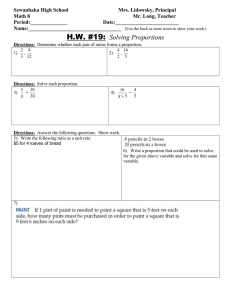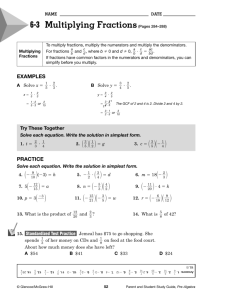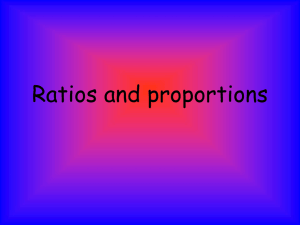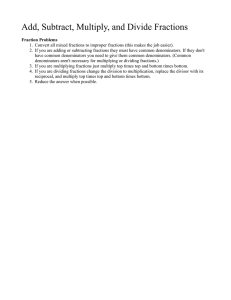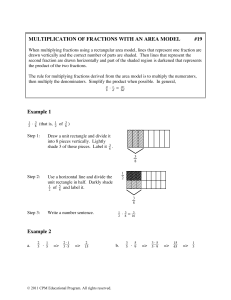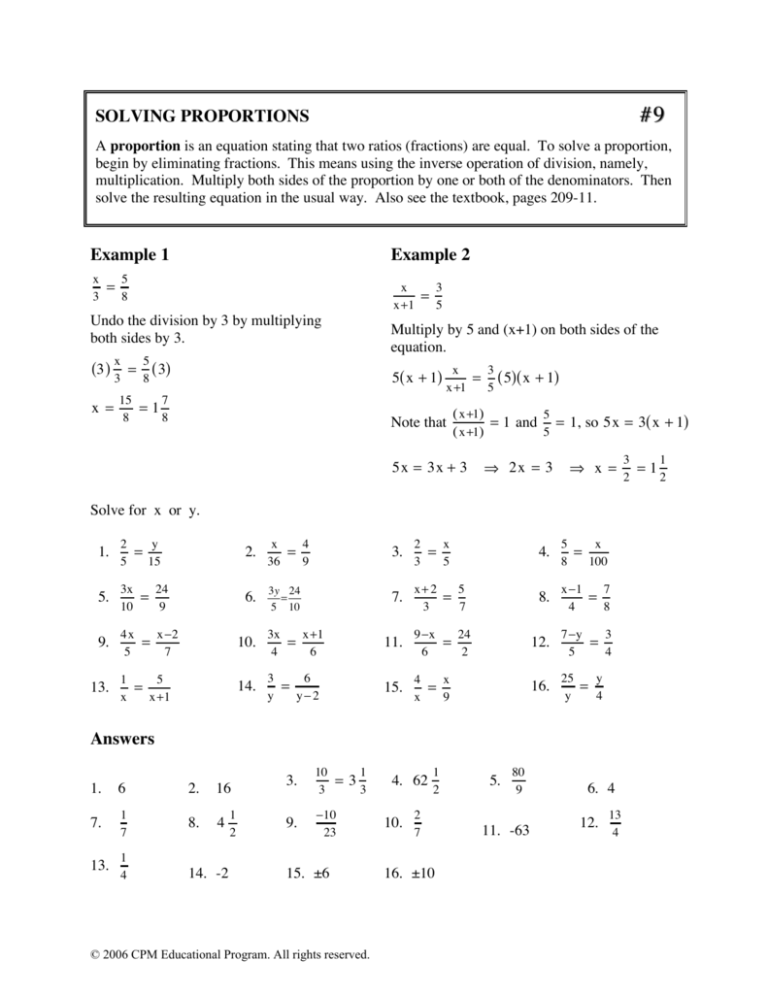
#9
SOLVING PROPORTIONS
A proportion is an equation stating that two ratios (fractions) are equal. To solve a proportion,
begin by eliminating fractions. This means using the inverse operation of division, namely,
multiplication. Multiply both sides of the proportion by one or both of the denominators. Then
solve the resulting equation in the usual way. Also see the textbook, pages 209-11.
Example 1
x
3
Example 2
5
8
=
x
x+1
Undo the division by 3 by multiplying
both sides by 3.
Multiply by 5 and (x+1) on both sides of the
equation.
(3 ) x = 5 ( 3)
3
x =
5( x + 1)
8
15
8
=1
3
5
=
7
8
x
x +1
Note that
=
3
5
( 5)( x + 1)
( x+1)
5
= 1 and = 1, so 5x = 3( x + 1)
( x+1)
5
5x = 3x + 3
⇒ 2x = 3
⇒ x =
Solve for x or y.
1.
2
5
5.
3x
10
=
24
9
9.
4x
5
=
x !2
7
13.
1
x
=
=
y
15
5
x+1
2.
x
36
6.
3y 24
=
5 10
10.
3x
4
14.
3
y
4
9
=
x+1
6
=
=
6
y! 2
3.
2
3
=
x
5
7.
x+ 2
3
=
5
7
11.
9!x
6
=
24
2
15.
4
x
x
9
=
4.
5
8
x
100
8.
x!1
4
=
7
8
12.
7 !y
5
=
3
4
16.
25
y
=
=
y
4
Answers
1.
6
2.
16
7.
1
7
8.
4
13.
1
4
14. -2
1
2
3.
10
3
9.
!10
23
=3
1
3
15. ±6
© 2006 CPM Educational Program. All rights reserved.
4. 62
10.
1
2
2
7
16. ±10
5.
80
9
11. -63
6. 4
12.
13
4
3
2
=1
1
2

